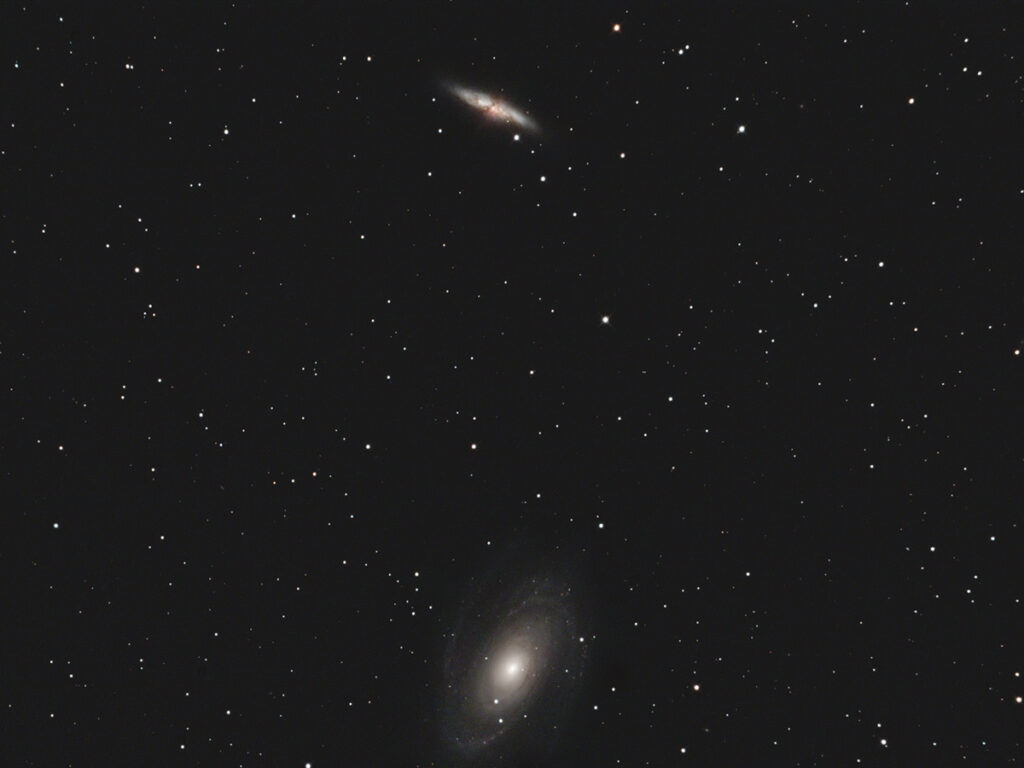
Telescope: Astro-Tech 8” f/8 Ritchey-Chretien, Orion Atlas EQ-G
Camera: Canon EOS Ra, Baader Mk III MPCC
Filter: Orion Imaging Skyglow Filter
Guide scope: Astro-Tech 60mm, Starlight Xpress Super Star, PHD2
Exposure: 12x120sec, ISO 800, saved as RAW
Darks: Internal (Long Exposure Noise Reduction On)
Flats: 32×1/2sec, Tee shirt flats taken at dusk
Average Light Pollution: Red zone, Bortle 8, fair transparency
Lensed Sky Quality Meter: 18.4
Stacking: Mean with a 1-sigma clip.
White Balance: Nebulosity Automatic
Software: Backyard EOS, Deep Sky Stacker, Nebulosity, Photoshop
NGC 404 is a faint (Mv 10.3) elliptical galaxy located just 7 arc-seconds northwest of Mirach (beta Andromeda, Mv 2.1). Mirach is a red giant lying about 200 light years away, while NGC 404 is 10 million light years distant, just outside the Local Group of which our galaxy is a member. It is a relatively small galaxy with an estimated diameter of only 9,600 light years.
This is one of my favorite easy to find targets. I first came across Mirach’s Ghost when using Mirach as an alignment and focusing target. Visually it can be a bit of a challenge to spot at first, but once you glimpse it then it becomes fairly obvious.
NGC 404 is currently well-placed high overhead in the early evening.









Recent Comments